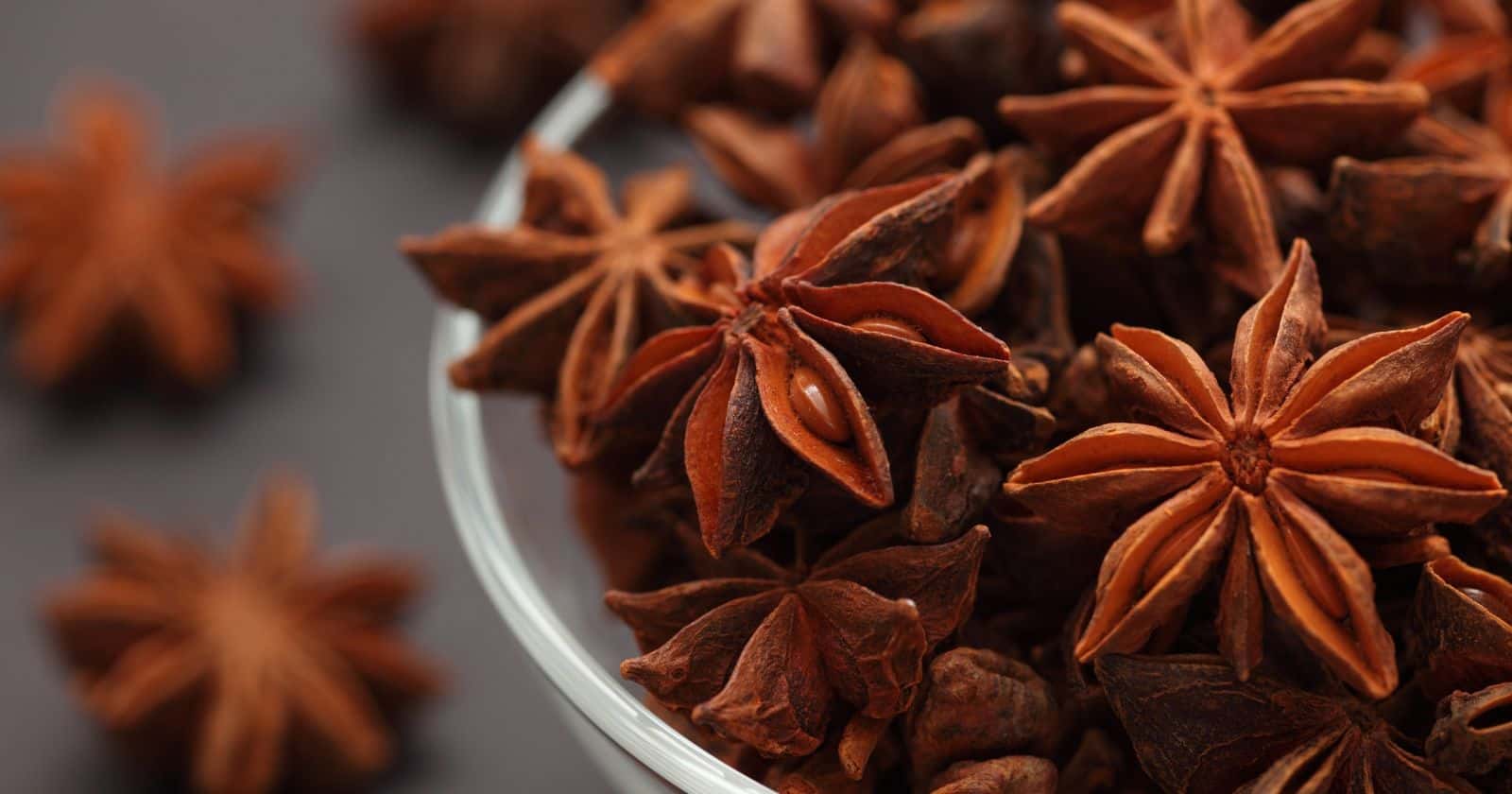If you’re a foodie who loves experimenting with flavors, you won’t want to miss this! Have you ever heard of star anise, the
If not, you’re in for a treat. In today’s post, we’ll explore why star anise is a must-have
Star anise is a versatile and flavorful
Whether you’re looking to add a twist to your soups, stews, or marinades, star anise is the perfect
The History of Star Anise: From Ancient China to Your Kitchen
Star anise has a rich history, dating back over 3,000 years in southern China and Vietnam. Initially discovered in southeast China, it is widely cultivated in the region. It has been pivotal in the Silk Road, the ancient trade network connecting China and the West.
Star anise has many culinary and medicinal uses, making it a popular ingredient in traditional Chinese medicine and cuisine. It is often used in soups, stews, and sauces, as well as in tea blends.
The medicinal properties of star anise make it particularly valuable for digestive issues and coughs.
Today, star anise can be found in kitchens worldwide, including yours! Its unique flavor and aroma make it a versatile
Star anise is more than just a
What Does Star Anise Taste Like? Understanding Its Flavor Profile
Star anise tastes sweet, warm, and spicy with a flavor similar to licorice, fennel seed, clove, and anise seed. Both the roots and the star themselves hold this distinct taste profile.
This
Star anise has a complex flavor that adds a unique layer of depth to any dish. Besides its sweetness and spicy warmth, it has hints of bitterness and sharpness.
It has a slight numbing quality, similar to Sichuan peppercorns, which can add a tingling sensation to dishes. Due to its high concentration of anethole, a phenol compound, it is commonly used in cough syrups and other cold or flu medications to ease symptoms.
One of the striking characteristics of star anise is its star shape, with each point containing a seed. It’s often added to dishes whole, and the seeds are removed before serving.
Star anise’s sweet and distinct flavor profile is essential in mulled wines, teas, and desserts. Additionally, it has a potent aroma, making it a popular ingredient in potpourri and other aromatic goods.
Health Benefits of Star Anise: From Digestion to Immune System Support
Star anise is a powerhouse of health benefits. Its oil contains thymol, terpineol, and anethole, which help treat cough and flu.
But that’s not all – this wonder
Its antibacterial properties fight common infections, including those of the respiratory system. Moreover, star anise can lower cancer risk and keep your skin healthy. It’s an excellent source of minerals, such as copper, calcium, and potassium.
Star anise has many health benefits, and its ability to bolster digestion is especially notable. It contains compounds that support digestive enzymes, helping to break down food molecules and ease discomfort.
Moreover, its antispasmodic properties can soothe intestinal muscle contractions, indicating studies. In addition, it can help prevent constipation by promoting regular bowel movements.
Do you know star anise can also support your immune system? Studies suggest its compounds stimulate white blood cell production, potentially enhancing your immune response.
Moreover, it contains antioxidants that can neutralize free radicals, ultimately reducing oxidative stress and inflammation that harm immunity.
How to Use Star Anise in Cooking: Recipes and Tips for Home Chefs
Star anise is perfect for adding flavor and warmth to your dishes. To use star anise in cooking, you can add a whole piece to your soups, stews, and braises.
You can also use it in sweet recipes like mulled wine, Christmas
Here are some popular recipes you can try using star anise:
- Slow-cooked Pork Belly with Star Anise: Rub a mixture of star anise, soy sauce, garlic, sugar, and salt onto the pork belly. Cook in a low-temperature oven for several hours until it becomes fall-off-the-bone tender.
- Red-Cooked Chicken with Star Anise: This Chinese classic is a flavor explosion in your mouth. Braise chicken thighs in soy sauce, Shaoxing cooking wine, sugar, ginger, garlic, and star anise until tender.
- Spiced Poached Pears: For a sweet dish, try poaching pears in a mixture of red wine, sugar, water, cinnamon, star anise, and cloves until soft and infused with the spices. Serve with whipped cream or vanilla ice cream.
Pairing Star Anise with Other Spices: Best Combinations for Delicious Flavors
Are you looking to add a burst of flavor to your dishes? Look no further than star anise!
This versatile
Star anise is perfect for high-fat meats like pork, goose, and duck. Broth with star anise, onions, and soy sauce can add depth and flavor to any savory dish.
Try pairing star anise with ginger, cinnamon, and onions for a Chinese poached chicken dish for a tasty, aromatic twist.
But it’s not just savory dishes that can benefit from star anise! This
Star Anise Substitute
Star anise is a delicious
However, if you can’t find it or if you want to try something different, there are several substitutes you can use.
- Fennel seeds are perhaps the most commonly used substitute for star anise, as they share a similar licorice flavor profile.
- Chinese five-spice powder is another popular choice, blending star anise with cinnamon, cloves, Sichuan pepper, and fennel seeds.
- Allspice is a unique option that combines cinnamon, nutmeg, and cloves.
- Caraway seeds with tarragon offer a slightly different flavor that pairs well with seafood dishes.
- Cassia bark powder is made from the same plant as cinnamon and has a similar sweet flavor.
- Licorice root and anise extract are also options for substituting the flavor of star anise.





